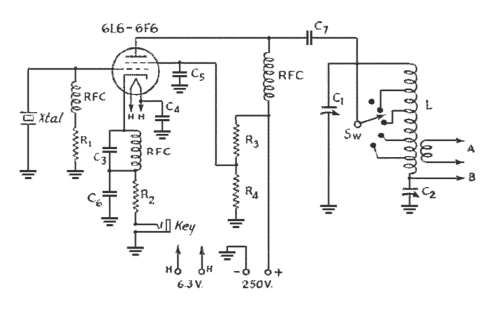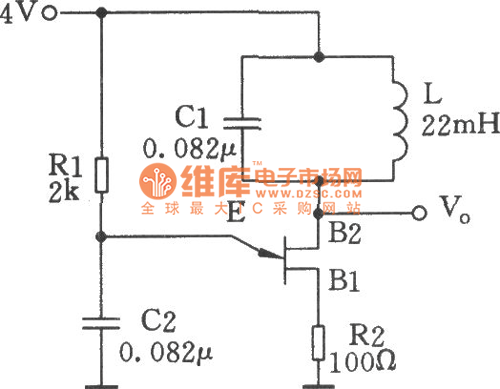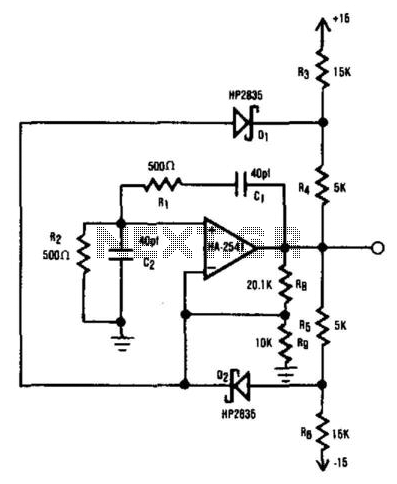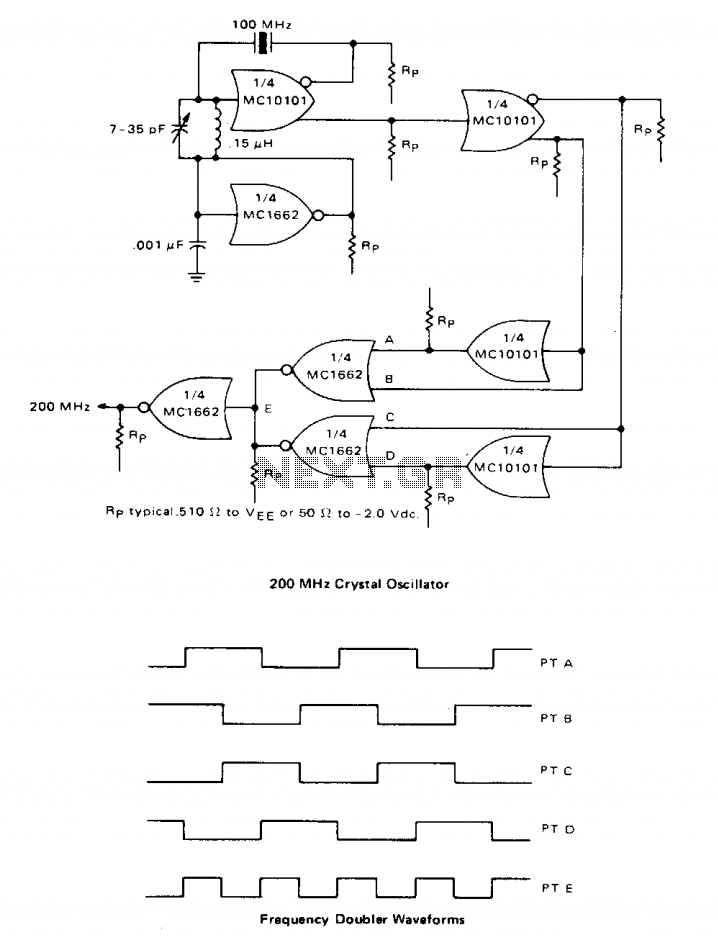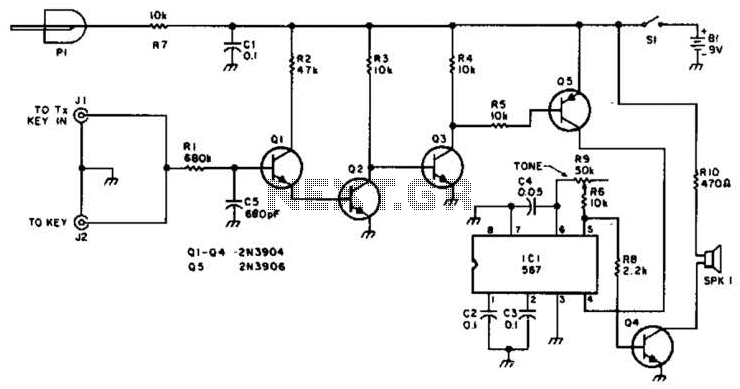
Big loop oscillator

L1 is a loop consisting of 10 to 20 turns of insulated wire with a diameter ranging from 4 inches to 4 feet. The oscillator frequency, which operates between 7 to 30 MHz, varies significantly when an individual approaches or enters the loop. This oscillator, in conjunction with a resonant detector, could serve as an effective anti-personnel alarm.
The circuit utilizes a loop (L1) made from insulated wire, designed to create a magnetic field when an alternating current flows through it. The number of turns in the loop, along with its diameter, affects the inductance and the resonant frequency of the oscillator circuit. The specified frequency range of 7 to 30 MHz indicates that the circuit is capable of detecting movements within a relatively high frequency range, which is effective for short-range detection.
When a person approaches the loop, the change in the magnetic field causes a shift in the oscillator frequency. This phenomenon is based on the principle of electromagnetic induction, where the presence of a conductive object (in this case, the human body) alters the inductive properties of the loop. The frequency shift can be detected by the resonant detector, which is tuned to the oscillator's frequency. The resonant detector can amplify the signal and trigger an alarm when the frequency deviation exceeds a predetermined threshold.
Transistors such as the 2N2926 are recommended for use in this circuit due to their suitable characteristics for high-frequency oscillation and amplification. The circuit design may also include additional components such as resistors, capacitors, and diodes to stabilize the oscillator, filter the output, and ensure reliable operation under varying environmental conditions.
Overall, this system can be effectively employed in security applications where a low-profile, high-sensitivity detection mechanism is required, providing an alert in response to unauthorized personnel entering a designated area. Proper calibration and testing of the circuit will be essential to optimize its performance and minimize false alarms.L1 is a loop of 10 to 20 turns of insulated wire with a diameter anywhere between 4" to 4'. Oscillator frequency (7 to 30 MHz) shifts substantially when a person comes near or into the loop. This oscillator together with a resonant detector might make a very good anti-personnel alarm. Transistors are 2N2926 or equivalent. 🔗 External reference
The circuit utilizes a loop (L1) made from insulated wire, designed to create a magnetic field when an alternating current flows through it. The number of turns in the loop, along with its diameter, affects the inductance and the resonant frequency of the oscillator circuit. The specified frequency range of 7 to 30 MHz indicates that the circuit is capable of detecting movements within a relatively high frequency range, which is effective for short-range detection.
When a person approaches the loop, the change in the magnetic field causes a shift in the oscillator frequency. This phenomenon is based on the principle of electromagnetic induction, where the presence of a conductive object (in this case, the human body) alters the inductive properties of the loop. The frequency shift can be detected by the resonant detector, which is tuned to the oscillator's frequency. The resonant detector can amplify the signal and trigger an alarm when the frequency deviation exceeds a predetermined threshold.
Transistors such as the 2N2926 are recommended for use in this circuit due to their suitable characteristics for high-frequency oscillation and amplification. The circuit design may also include additional components such as resistors, capacitors, and diodes to stabilize the oscillator, filter the output, and ensure reliable operation under varying environmental conditions.
Overall, this system can be effectively employed in security applications where a low-profile, high-sensitivity detection mechanism is required, providing an alert in response to unauthorized personnel entering a designated area. Proper calibration and testing of the circuit will be essential to optimize its performance and minimize false alarms.L1 is a loop of 10 to 20 turns of insulated wire with a diameter anywhere between 4" to 4'. Oscillator frequency (7 to 30 MHz) shifts substantially when a person comes near or into the loop. This oscillator together with a resonant detector might make a very good anti-personnel alarm. Transistors are 2N2926 or equivalent. 🔗 External reference
